Marigolds at home in a pot: planting and caring for flowers
Marigold are one of the most widespread ornamental plants in Russia. They are grown both at home and outdoors. The popularity of this flower has brought unpretentious care, as well as long flowering and unusual bright buds that will adorn any garden. Marigolds have many varieties and types. Even beginners will be able to grow them at home, since the plant takes root perfectly in any apartment.
Content:
- Description of the flower, varieties and types
- Planting and caring for seedlings
- Caring for flowers at home
- Possible growing problems
Description of the flower, varieties and types
Marigolds were one of the first flowers brought to Russia from Europe. In different countries, this plant is called differently. So, for example, the British call him Marigold, which means "Mary's gold". The flowers received the Russian name "marigolds" due to the velvety surface of the petals.
Growing marigolds in a pot at home is quite simple.
The plant is unpretentious to care for and does not require much effort. It blooms for a long time and abundantly, therefore, marigolds are often decorated with gardens and front gardens. The flower has a fairly developed root systemas well as an erect stem. The height of the flower depends on the variety. Some varieties of marigolds can reach a height of 2 m, others do not exceed 20 cm. Of course, it is more convenient to grow low-growing marigolds at home.
The leaves can have various shades of green and any shape, depending on the type and variety of the plant. Inflorescences can be simple, double and semi-double. There are also many shades of marigolds: yellow, orange, red. There are flowers that combine several shades at once.
The most common varieties of marigolds are:
- African. These are short plants with large buds. They are most often grown on balconies and in gardens, as they look very beautiful and bright. In height, they can reach a meter, depending on the variety. Bloom for a very long time and magnificently. Flowers can be double or semi-double.
- French. This species has slightly smaller flowers, as well as lateral shoots deflected to the side. The maximum flower height is half a meter. The buds are often multi-colored, combining yellow and orange hues.
- Narrow-leaved. These are compact bushes with small flowers and dense greenery. They bloom very profusely, flowering stops with the first frost. In height, such a bush rarely reaches more than half a meter.
- Radiant. This plant is also called Mexican tarragon. It resembles a short bush with sharp leaves and small yellow buds, which, when dried, can be used as food coloring. The leaves are used in cooking as a substitute for tarragon.
This flower is grown not only for decorative purposes. Marigold have healing properties. A decoction of this flower was used to treat eye diseases and diabetes mellitus. It is also used as a seasoning, added to marinades.
Planting and caring for seedlings
Planting and growing marigolds at home is quite simple. You can grow this unpretentious flower in a pot at home, as well as immediately sow in open ground or prepare seedlings. Marigolds are quite cold-resistant, so they are not afraid of planting in open ground. However, despite the cold resistance, marigolds do not like freezing.You can sow seeds in a permanent place at temperatures above 5 degrees.
The seedlings do not need special protection such as films and shelters, but they need to be provided with minimal care. When planting, it is important to adhere to some rules:
- The time for sowing seeds is determined individually. For seedlings, choose March-April. If the seeds need to be sown directly into open ground, it is better to do this in late April-early May, when the frost will definitely not return. In warm regions, planting can be done a couple of weeks earlier.
- It is very convenient to grow seedlings at home. They can be planted already in bloom (marigolds begin to bloom in 1-2 months), form flower beds.
- If marigolds are grown not for open ground, but for home, it is best to sow seeds in the fall, then in the spring the first buds will appear, which will delight with their flowering for a long time.
- The soil for sowing should be light, loose and fertile. It is desirable that it contains peat and washed sand. Don't forget about drainage.
- To avoid contamination, the soil can be treated with a solution of potassium permanganate or steamed. Store-bought soil usually does not need to be processed.
- It is best to choose a plastic pot or container. The soil should be slightly damp. Small grooves are made in it, no deeper than 1 cm. Seeds must be carefully poured into them. There should be a distance of 2-3 cm between the seeds.
- The pot must be kept at a temperature no higher than 25 degrees. In a couple of days, sprouts will appear. However, if the seeds are old, the process can take up to a week.
No special care for marigolds is required. It is enough to periodically water the seedlings so that the soil does not dry out. When the first 2-3 leaves appear on the seedlings, they can be planted in separate pots. Experienced gardeners claim that marigolds can be saved even in case of frost. If you cover them with plastic, they will survive the cold and become stronger.
Caring for flowers at home
Even the laziest grower will be able to grow blooming marigolds at home. This plant easily adapts to any conditions and does not cause any special problems when growing. At the same time, beautiful flowers can be used for cosmetic and medical purposes. Marigolds feel great on a light windowsill, in the shade or partial shade, but the light gives them more strength for lush flowering.
To grow marigolds at home, it is enough to follow a few simple rules:
- Like any plant, marigolds need watering... They need to be watered every day during the hot season, and the rest of the time as the soil dries up. Marigolds also tolerate drought well, but their appearance in this case deteriorates significantly.
- In order for the plant to bloom magnificently and grow better, periodically the soil needs to be loosened. This will provide the roots with oxygen and the necessary moisture. However, loosening must be done very carefully so as not to damage the root system.
- As it blooms, it is advisable to carefully remove wilted buds. This will make room for new buds and give them more light.
- At home, potting soil is depleted rather quickly. There is no need to constantly change all the soil and replant the plant, but you need to feed it. There is a large selection in specialized stores mineral fertilizers.
- As a rule, marigolds bloom until late autumn, but their flowering may decrease in the middle of summer. To provoke a new wave of flowering, you need to cut the bushes.
- After the marigolds have bloomed, you can collect their petals and seeds. If further planting of seeds is planned, then you need to select the largest and even ones.
With proper care, marigolds grow quickly and bloom for quite some time. A short flowering period indicates a lack of nutrients or moisture.
Marigolds are not only beautiful, but also useful flowers.
Parts of this plant contain a substance that repels midges, so it is planted in flower beds in summer, and dried buds are thrown into a compost pit.Many people use marigold petals for cosmetic purposes, treat inflamed skin, acne, and acne. You can also take a bath with them to get rid of depression. Marigold petals are also used for medicinal purposes, for example, to treat intestinal parasites.
Possible growing problems
Growing problems marigolds occur quite rarely. They do not require complex care, they easily adapt to the living conditions and independently release substances that repel pests.
Despite significant resistance, marigolds can face the following diseases and pests:
- Blackleg. This is the most common marigold disease. It starts with a slight light bloom at the base of the stem. Then this plaque darkens and resembles black spots. This means that the process of decay begins. It is impossible to stop decay, the plant will die. It must be dug up together and by the root and thrown away or burned. The soil needs to be worked fungicide... If the disease has struck several flowers at once, you need to sprinkle the soil in the pot with ash. If that doesn't work, the only solution is to transplant healthy plants.
- Viral diseases. Viral diseases appear in yellowed and deformed marigold shoots. Black dots can be seen on the leaves and shoots, which will rapidly increase in size. It is very difficult to cure such diseases. To avoid contamination of other plants, the flower must be removed along with the root.
- Spider mite. Most often, this pest can be found on a young plant. As soon as the air humidity drops, it begins to attack the marigolds. First of all, the spider mite attacks young leaves. They begin to lighten and dry noticeably. On the stems and leaves, a white bloom characteristic of a spider mite appears. This pest does not like moisture. Regular spraying of the leaves will serve as an excellent prevention of disease. Spraying with tobacco infusion and laundry soap will help get rid of the tick.
You can rarely see pests on marigolds. It is worth remembering that with proper care, the likelihood of disease is minimized. The main methods of prevention are soil cultivation when planting seeds, as well as adherence to the moisture regime. Most often, marigolds begin to get sick with abundant or insufficient watering. In order to timely detect the disease and take action, you need to regularly examine the plants for various spots and lesions.
More information can be found in the video:




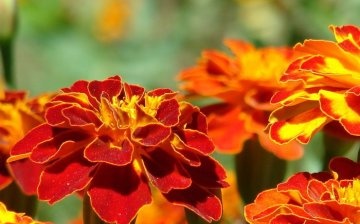
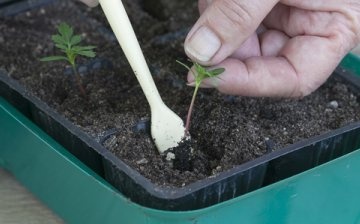
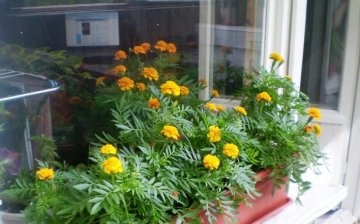






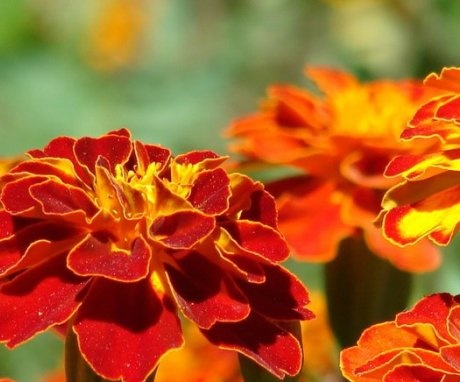
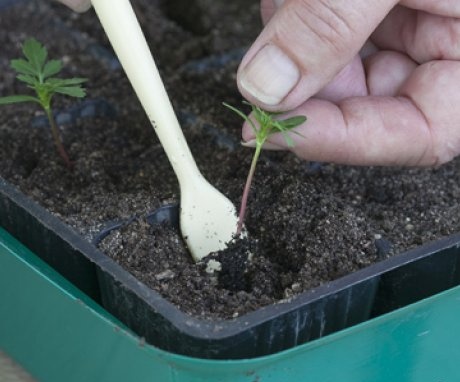
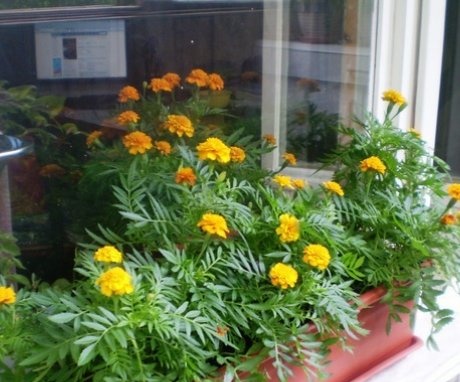
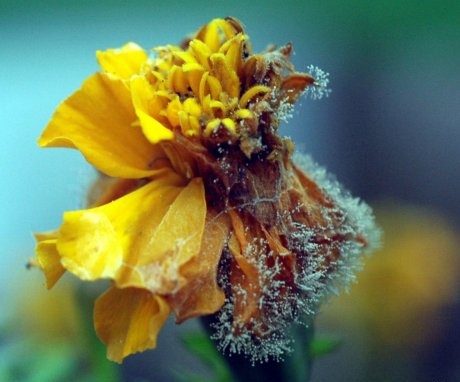
Oh, I completely forgot about these wonderful beauties - for sure, you can please yourself with them at home! Most of all attracted by "African" marigolds, they are still larger. Once grown in the garden, but they died, rotted, - I thought, flooded, now I understand that they were sick. I'll plant it!
Marigolds are very unpretentious flowers. I plant them in the open field on the site. These flowers do not require special care, I plant seeds in the ground, water them regularly, and soon beautiful orange flowers appear.
I plant marigolds in my summer cottage along the entire path along the garden saz along the edges of it. They set off paving slabs very well. Functional and beautiful. We do not plant marigolds at home and do not intend to, we prefer violets.